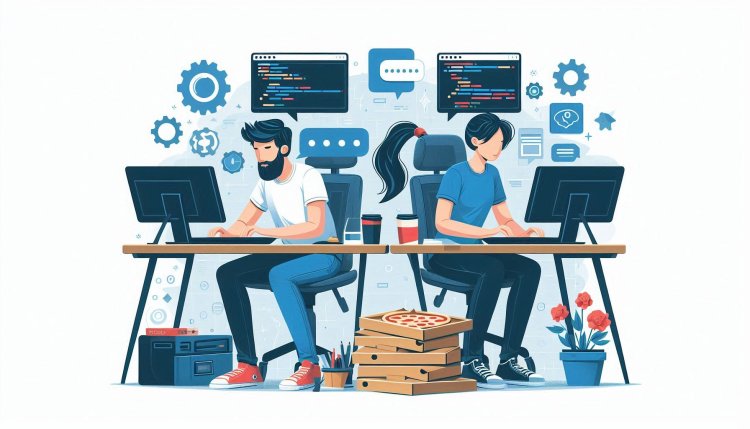Pair Programming
Pair programming is a collaborative software development technique where two programmers work together on the same code. Learn its benefits and best practices.

Pair Programming
Pair programming is a software development technique in which two programmers work together on the same codebase, typically sharing a single computer. The practice involves two roles: the driver, who writes the code, and the navigator, who reviews each line of code as it is written.
Benefits of Pair Programming
- Improved Code Quality: With two sets of eyes on the code, pair programming can lead to fewer bugs and higher-quality code.
- Knowledge Sharing: Pair programming allows for the exchange of knowledge and skills between team members, leading to a more well-rounded team.
- Increased Productivity: While it may seem counterintuitive, pair programming can actually increase productivity by reducing the need for code reviews and debugging later on.
- Enhanced Problem-Solving: Two heads are often better than one when it comes to solving complex problems. Pair programming can lead to more innovative solutions.
- Improved Communication: Pair programming encourages constant communication between team members, fostering collaboration and teamwork.
Best Practices for Pair Programming
- Establish Clear Roles: Make sure both the driver and navigator understand their roles and responsibilities during the pair programming session.
- Take Turns: Rotate between the roles of driver and navigator regularly to keep both team members engaged and prevent burnout.
- Communicate Effectively: Encourage open communication and feedback between the pair programming partners to ensure a productive working relationship.
- Set Goals: Define clear goals and objectives for each pair programming session to keep the work focused and on track.
- Take Breaks: Pair programming can be intense, so be sure to take regular breaks to rest and recharge.
Challenges of Pair Programming
While pair programming has many benefits, it also comes with its own set of challenges:
- Personality Clashes: Not all programmers work well together, and personality clashes can hinder the effectiveness of pair programming.
- Unequal Skill Levels: If one team member is significantly more experienced than the other, it can lead to imbalance in the pair programming partnership.
- Time Constraints: Pair programming can be time-consuming, especially if team members have conflicting schedules or priorities.
- Physical Proximity: In a remote work environment, pair programming may be more challenging due to the lack of in-person communication and collaboration.
Tools for Pair Programming
There are several tools available to facilitate pair programming, including:
- Screen Sharing: Tools like Zoom, Google Meet, and Microsoft Teams allow team members to share their screens and collaborate in real-time.
- Code Collaboration: Platforms like GitHub, GitLab, and Bitbucket provide features for collaborative coding, such as pull requests and code reviews.
- Integrated Development Environments (IDEs): IDEs like Visual Studio Code, IntelliJ IDEA, and Eclipse offer features specifically designed for pair programming, such as live sharing and real-time editing.
Pair Programming in Practice
Pair programming can be implemented in various ways depending on the team's preferences and work style. Some common approaches include:
- Pair Rotation: Team members rotate between pairs regularly to share knowledge and prevent silos of information.
- Remote Pairing: Team members collaborate on code remotely using screen sharing and video conferencing tools.
- Ad Hoc Pairing: Team members pair up as needed for specific tasks or to troubleshoot challenging issues.
Conclusion
Pair programming is a powerful technique for improving code quality, fostering collaboration, and enhancing team productivity. While it may come with its own set of challenges, the benefits of pair programming often outweigh the drawbacks.
What's Your Reaction?

















